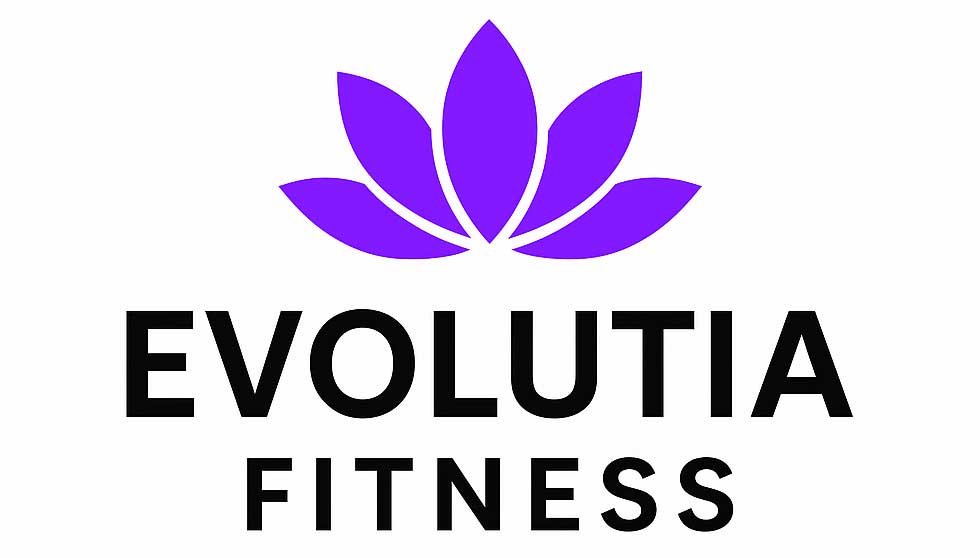In today’s fast-paced world, many people struggle with overwhelming stress and anxiety that can impact both mental and physical wellbeing. Yoga offers a powerful antidote to these common challenges through mindful movement and breath control techniques that can be practiced anywhere. Research shows that just five minutes of deep breathing can activate the parasympathetic nervous system, reducing cortisol levels and creating an immediate calming effect.
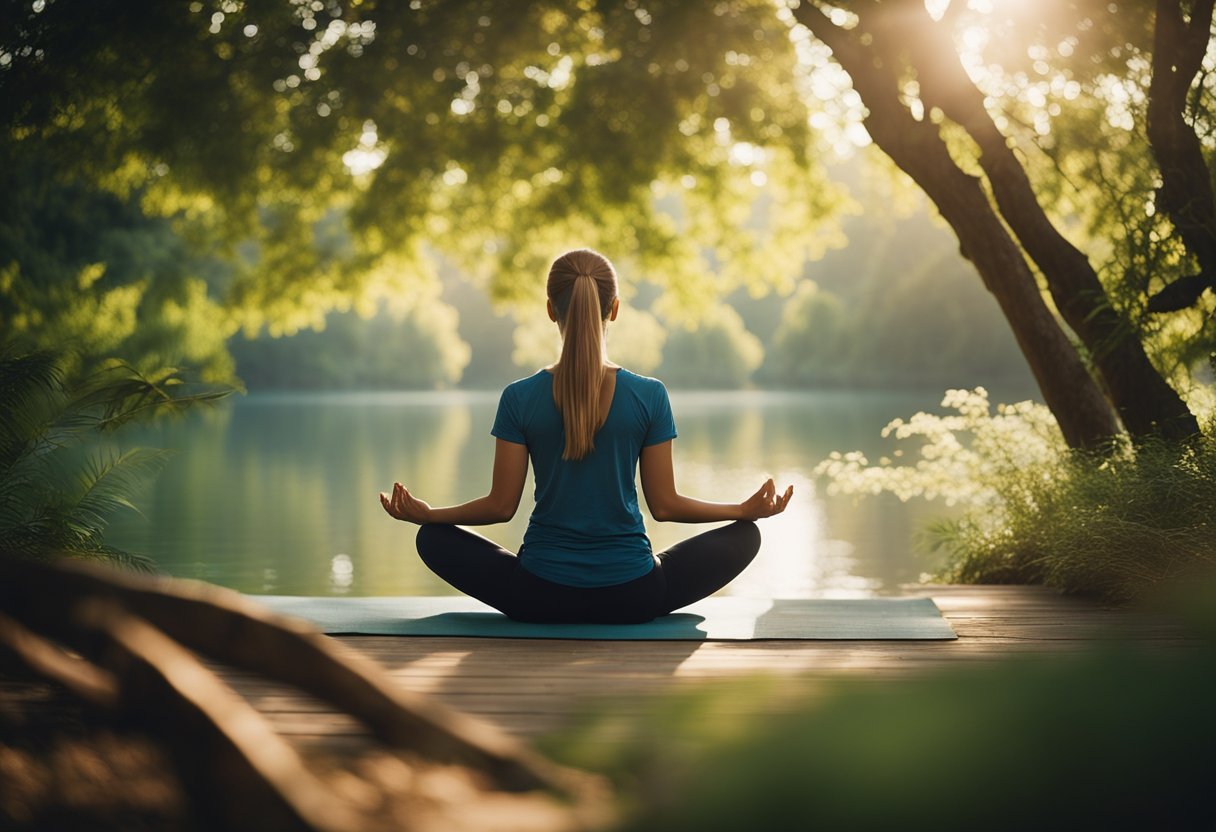
The combination of specific breathing exercises with targeted yoga poses for stress and anxiety creates a comprehensive approach to stress management that works on multiple levels. These techniques don’t require special equipment or extensive training—just a willingness to pause and connect with the breath. Many practitioners report feeling a noticeable difference after incorporating these simple practices into their daily routines.
The following breathing hacks and yoga poses can provide relief during moments of acute stress while also building resilience against future anxiety when practiced regularly. These evidence-based techniques have been refined over thousands of years and are now supported by modern scientific understanding of how the mind-body connection functions during stress responses.
Table of Contents
Understanding Stress and Anxiety
Stress and anxiety are natural human responses that have evolved as protective mechanisms, but when chronic, they can significantly impact physical and mental wellbeing. These responses trigger a cascade of physiological changes designed to help us cope with perceived threats.
The Science of Stress
Stress activates the body’s “fight-or-flight” response, triggering the release of hormones like cortisol and adrenaline. These hormones increase heart rate, elevate blood pressure, and redirect blood flow to major muscle groups in preparation for physical action.
The body’s stress response follows a three-stage process:
- Alarm stage: Initial recognition of a stressor
- Resistance stage: Body attempts to adapt and cope
- Exhaustion stage: Resources become depleted with chronic stress
Short-term stress can be beneficial, enhancing focus and performance. However, chronic stress keeps the body in a constant state of alertness, which can lead to health issues such as cardiovascular problems, digestive disorders, and weakened immune function.
How Anxiety Affects the Body and Mind
Anxiety extends beyond normal stress reactions, often persisting even without clear external threats. Physical manifestations include muscle tension, digestive issues, and disrupted sleep patterns. Many people experience rapid breathing, increased heart rate, and excessive sweating during anxiety episodes.
Mentally, anxiety creates a state of hypervigilance and worry. The mind becomes preoccupied with potential dangers, making it difficult to concentrate on daily tasks. This constant state of alertness can lead to:
- Difficulty making decisions
- Problems with memory and focus
- Persistent feelings of dread
- Irritability and mood changes
Brain imaging studies show that anxiety activates areas associated with fear processing, particularly the amygdala. This activation can override the prefrontal cortex, which normally helps with rational thinking and emotional regulation.
The Role of Yoga for Stress and Anxiety
Yoga offers a comprehensive approach to stress management through its integration of physical postures, breathing techniques, and mindfulness practices. These elements work together to regulate the body’s stress response and promote a sense of calm and balance.
Yoga and the Nervous System
Yoga practices directly impact the autonomic nervous system, helping shift from the sympathetic “fight-or-flight” response to the parasympathetic “rest-and-digest” state. This transition is crucial for stress reduction and recovery.
Specific yoga poses stimulate the vagus nerve, a key component in parasympathetic activation. When engaged, this nerve helps lower heart rate, blood pressure, and cortisol levels.
Slow, rhythmic breathing practiced during yoga activates the body’s relaxation response. This counteracts the shallow, rapid breathing pattern typical during stress reactions.
Regular practice creates neuroplastic changes in the brain regions responsible for stress processing. Research shows these changes help practitioners develop greater resilience to stressors over time.
Evidence-Based Benefits of Yoga
Scientific studies demonstrate measurable physiological changes from regular yoga practice. A 2020 review in the Journal of Clinical Psychology found yoga significantly reduced cortisol levels and other stress biomarkers.
Key Stress-Reduction Benefits:
- 25-30% reduction in cortisol levels
- Improved heart rate variability
- Lower blood pressure
- Decreased inflammation markers
Research from Harvard Medical School indicates yoga practitioners show increased gray matter in the hippocampus and prefrontal cortex, brain regions involved in stress regulation and emotional processing.
Yoga’s mindfulness component trains attention and awareness, helping practitioners identify stress triggers earlier. This early recognition allows for more effective stress management before physiological responses intensify.
Breathing Hacks for Instant Stress Reduction
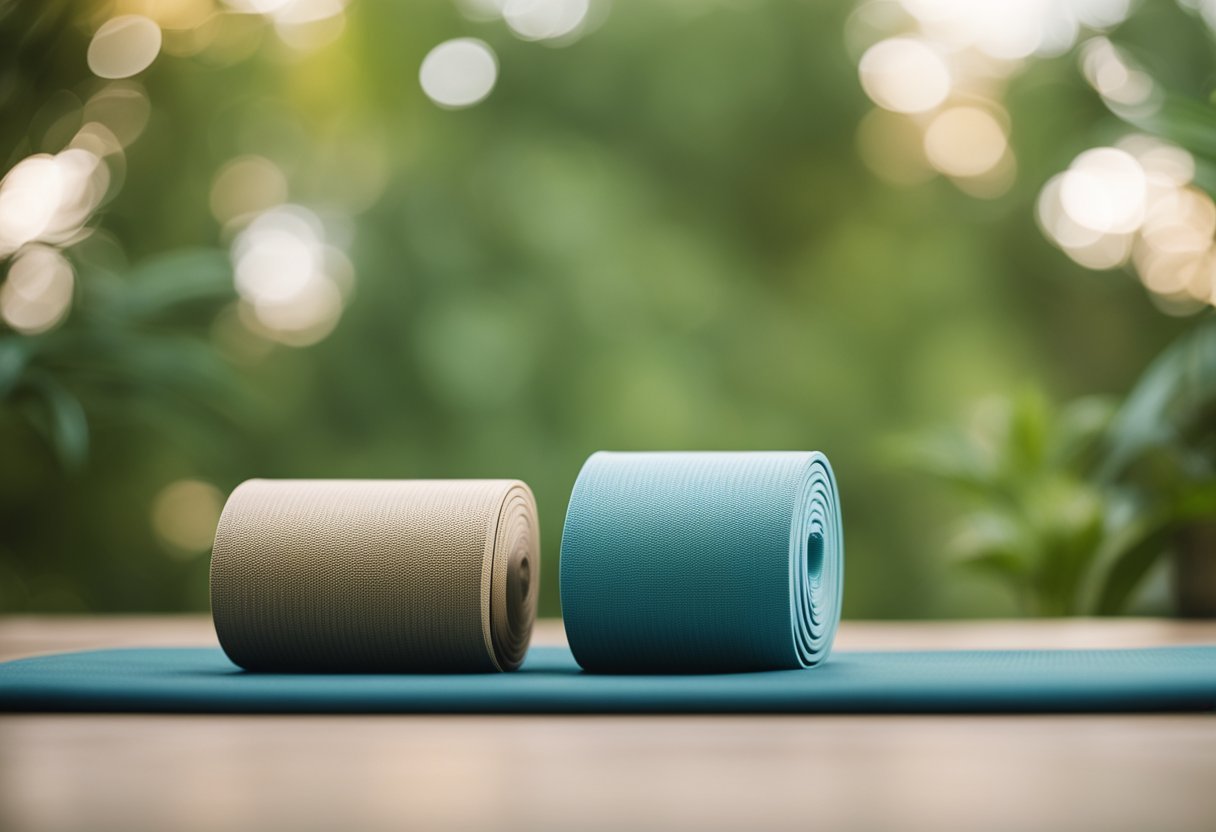
The human breath serves as a powerful tool for managing stress and anxiety. These three breathing techniques can be performed anywhere and require only a few minutes to produce noticeable calming effects on the nervous system.
Diaphragmatic Breathing Technique
Diaphragmatic breathing, also known as belly breathing, engages the diaphragm muscle fully to maximize oxygen intake. This technique activates the parasympathetic nervous system, reducing cortisol levels and heart rate.
How to practice:
- Sit or lie in a comfortable position
- Place one hand on your chest and the other on your abdomen
- Inhale slowly through your nose for 4 counts, allowing your abdomen to expand
- Hold briefly
- Exhale gradually through your mouth for 6 counts
The key is ensuring your abdomen rises more than your chest during inhalation. Practice for 5-10 minutes daily for optimal benefits.
Research shows diaphragmatic breathing can reduce anxiety symptoms by 15-20% when practiced regularly. Many practitioners report feeling calmer after just 3-5 minutes of focused practice.
Nadi Shodhana (Alternate Nostril Breathing)
Nadi Shodhana balances the left and right hemispheres of the brain while clearing energy channels. This technique promotes mental clarity and emotional balance.
Step-by-step guide:
- Sit comfortably with an erect spine
- Rest your left hand on your left knee
- Fold your right index and middle fingers toward your palm
- Close your right nostril with your right thumb
- Inhale through your left nostril
- Close your left nostril with your ring finger
- Release your thumb and exhale through your right nostril
Complete 5-10 rounds, alternating nostrils with each breath cycle. This technique is particularly effective before stressful situations or at bedtime.
Studies indicate Nadi Shodhana may reduce blood pressure and anxiety levels while improving concentration.
Kapalabhati (Skull Shining Breath)
Kapalabhati combines rapid, forceful exhalations with passive inhalations to energize the body and clear the mind. Unlike other calming breaths, this technique invigorates while relieving tension.
Practice method:
- Sit with a straight spine
- Take a deep inhale
- Exhale forcefully through the nose by contracting your lower abdomen
- Allow the inhalation to happen passively as the abdomen relaxes
- Repeat at a rate of about one breath per second
Begin with 3 rounds of 20 breaths each, resting between rounds. Avoid this technique if you have high blood pressure, heart conditions, or are pregnant.
Kapalabhati helps expel toxins, clear sinus passages, and boost energy. The rhythmic focus required creates a meditative state that displaces anxious thoughts.
Yoga Poses for Easing Stress and Anxiety
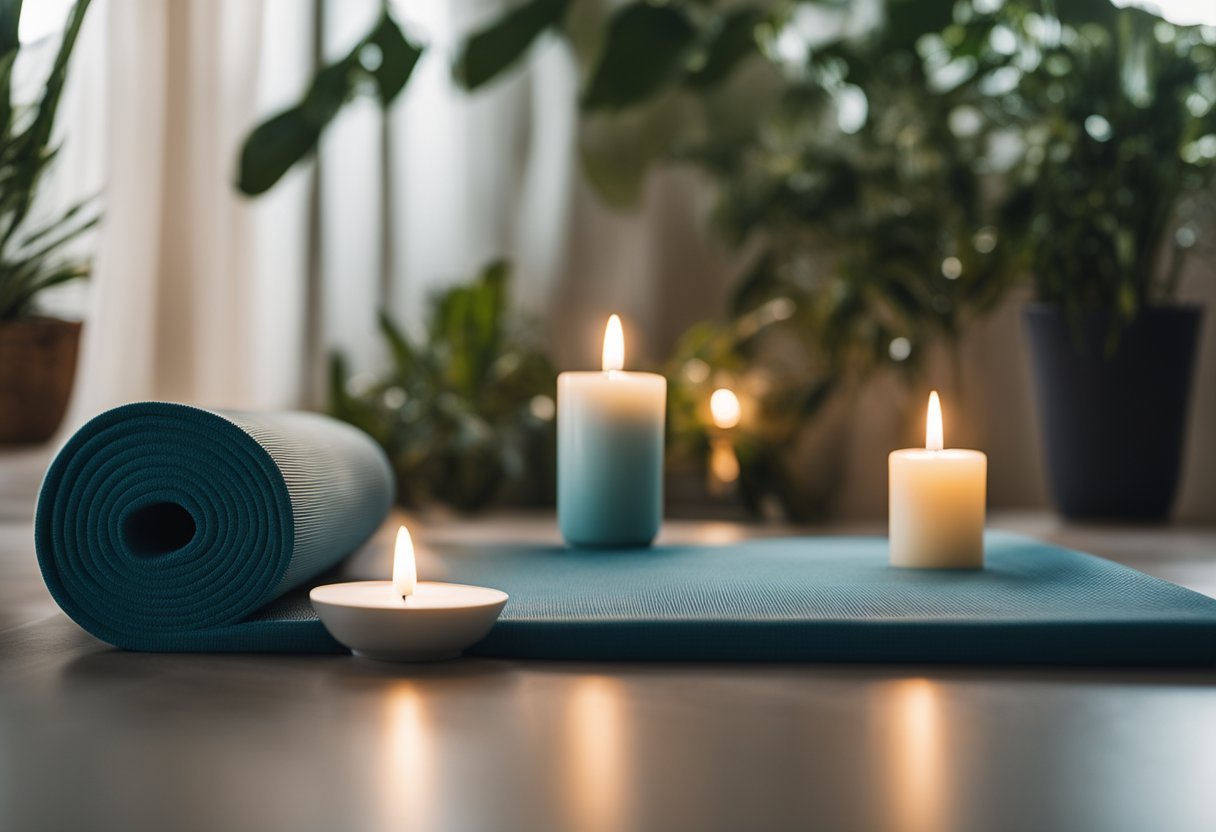
These targeted yoga poses work directly on the physical symptoms of stress while calming the nervous system. Each posture activates the parasympathetic response, reducing cortisol levels and easing tension in key areas where stress accumulates.
Child’s Pose (Balasana)
Child’s Pose serves as a foundational resting position that activates the parasympathetic nervous system.
How to perform:
- Kneel on the floor with toes touching and knees hip-width apart
- Exhale and lower your torso between your thighs
- Extend arms forward or rest them alongside your body
- Hold for 1-3 minutes while breathing deeply
This gentle forward fold releases tension in the back, shoulders, and neck—common areas where stress manifests physically. The pose naturally encourages deeper breathing, which helps lower heart rate and blood pressure.
Many practitioners report immediate relief from racing thoughts as the forehead connection to the mat stimulates the vagus nerve. This activation sends signals to the brain to reduce anxiety.
Legs Up the Wall Pose (Viparita Karani)
This inversion pose reverses blood flow and provides profound relaxation with minimal effort.
Benefits:
- Reduces swelling in legs and feet
- Relieves lower back tension
- Calms the mind
- Improves circulation
Technique:
- Sit with one hip against a wall
- Swing legs up as you lower your back to the floor
- Position your buttocks close to or touching the wall
- Rest arms at your sides, palms up
- Close eyes and breathe normally for 5-15 minutes
This pose effectively triggers the body’s relaxation response by gently stretching the back of the neck and relieving pressure on the heart. The mild inversion aspect helps drain lymphatic fluid and reduce stress on the cardiovascular system.
Standing Forward Bend (Uttanasana)
This simple yet powerful pose delivers immediate stress relief by increasing blood flow to the brain and stretching the entire posterior chain.
Step-by-step instructions:
- Stand with feet hip-width apart
- Exhale and bend forward from the hip joints
- Place hands on the floor or hold opposite elbows
- Relax your head and neck completely
Forward bends naturally calm the brain and help relieve stress and mild depression. The inverted position stimulates the parasympathetic nervous system, counteracting the fight-or-flight response.
For maximum benefit, hold for 30-60 seconds while focusing on slow, deep breaths. If hamstrings feel tight, bend the knees slightly to maintain the therapeutic benefits without strain.
Corpse Pose (Savasana)
Despite its simplicity, Savasana may be the most challenging and beneficial pose for anxiety reduction.
This final relaxation pose allows for complete surrender and integration of the practice’s benefits. The body enters a state of conscious rest while remaining fully aware.
Proper technique:
- Lie flat on your back
- Allow feet to fall open naturally
- Place arms at sides, palms facing up
- Close eyes and relax facial muscles
- Breathe naturally without controlling breath
Research shows that 10 minutes in Savasana can lower blood pressure and cortisol levels significantly. The pose creates space for mindfulness and body awareness, breaking the cycle of anxious thoughts.
For enhanced effects, practice with a weighted eye pillow or soft background sounds that induce relaxation.
Bonus Pose: Check out our guide on Tree Pose if you want to add one more pose to the sequence!
Integrating Yoga into Your Daily Routine
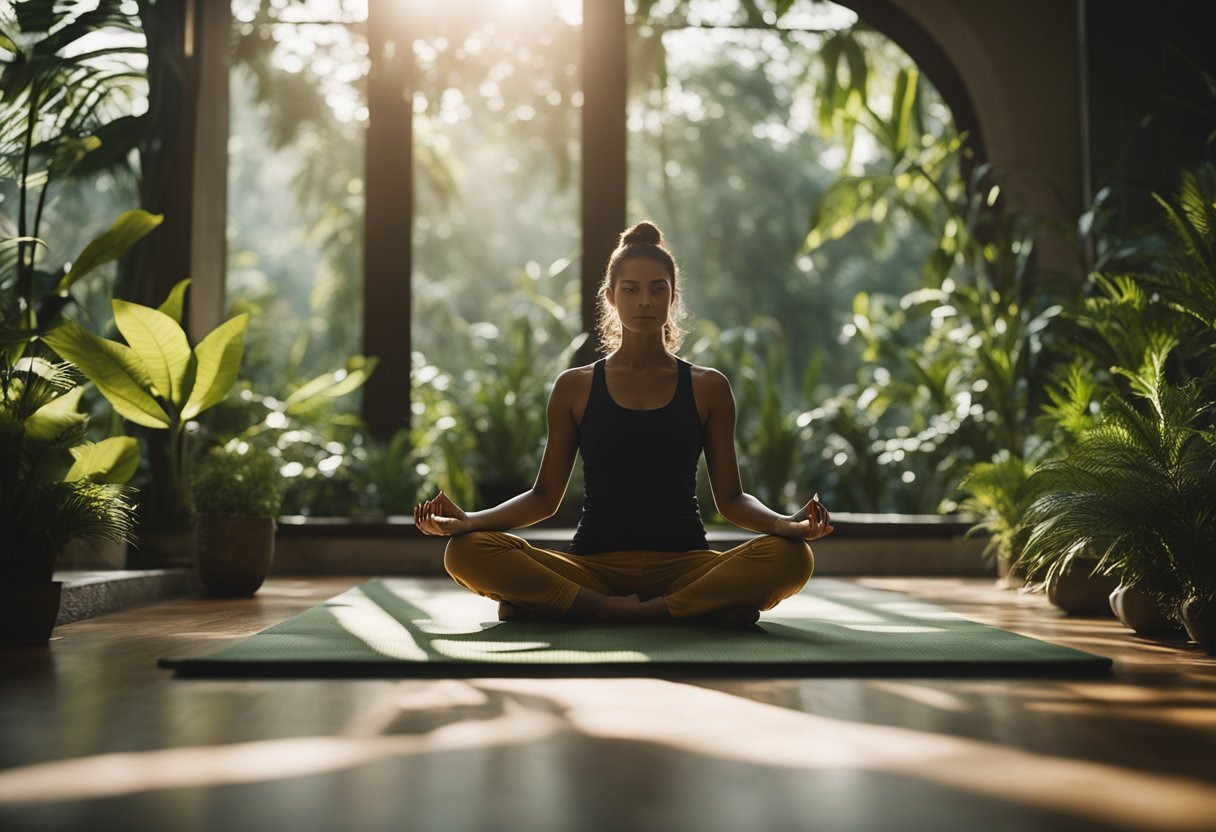
Finding time for yoga doesn’t require hours of practice. Even 10-15 minutes daily can provide significant benefits for managing stress and anxiety. Consistency matters more than duration when establishing a sustainable yoga routine.
Morning Practice Benefits:
- Energizes the body for the day ahead
- Creates a calm mindset before daily challenges
- Establishes a positive tone for the day
Many practitioners find that morning yoga helps set intentions and cultivates mindfulness that carries throughout the day. Evening sessions, alternatively, can help release accumulated tension and prepare the body for restful sleep.
Start by identifying realistic time slots in your schedule. Perhaps it’s right after waking up, during a lunch break, or before bed when the house is quiet.
Simple Ways to Incorporate Yoga:
| Time of Day | Suggested Practice | Duration |
|---|---|---|
| Morning | Sun salutations + breathing | 5-10 min |
| Midday | Desk yoga stretches | 3-5 min |
| Evening | Gentle poses + meditation | 10-15 min |
Keep yoga accessories visible as physical reminders. A rolled mat by the bed or a meditation cushion in the living room serves as a visual cue to practice.
Technology can support consistency through yoga apps or calendar reminders. Many apps offer short, guided sessions specifically designed for stress reduction.
Remember that yoga isn’t limited to formal practice on a mat. Incorporate mindful breathing while waiting in line or practice subtle stretches during work breaks to extend benefits throughout the day.
Creating a Soothing Environment for Practice
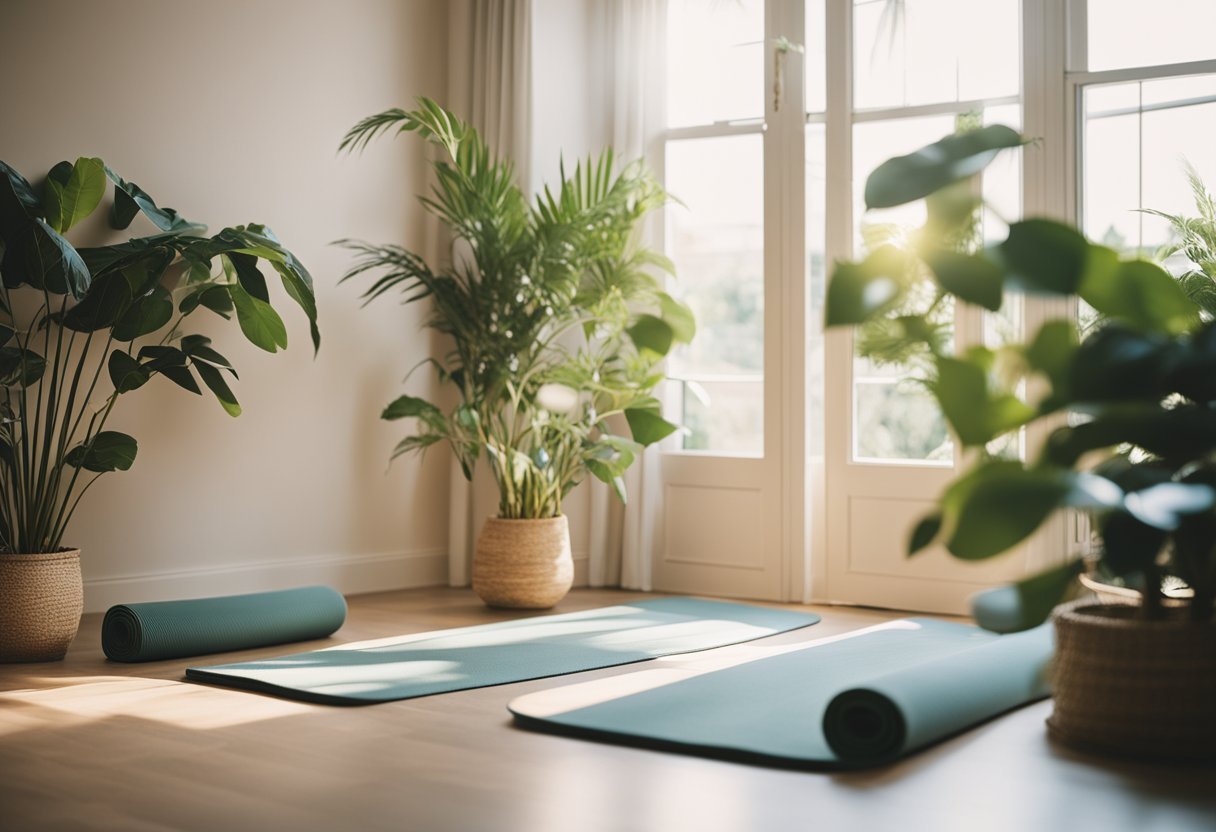
The environment where yoga and breathing exercises take place significantly impacts their effectiveness for stress and anxiety. A calm, organized space helps the mind settle more quickly into a peaceful state.
Location considerations matter greatly. Choose a quiet area away from household traffic and noise. A corner of a bedroom or a dedicated yoga room works well if available.
Comfort elements should be prioritized. Use a high-quality yoga mat and have props like blocks, blankets, and bolsters nearby to support proper alignment and relaxation.
Temperature and lighting play crucial roles in creating the right atmosphere. Aim for a comfortably warm room with soft, diffused lighting rather than harsh overhead lights. Natural light is ideal when available.
Essential elements for a calming yoga space:
- Clean, uncluttered area free of distractions
- Comfortable room temperature (68-72°F)
- Soft lighting or natural light
- Minimal noise or soothing background sounds
- Proper ventilation for fresh air
Many practitioners find that nature sounds, gentle instrumental music, or silence enhances their practice. Using a white noise machine can help mask disruptive external sounds if necessary.
Scent can be a powerful relaxation trigger. Consider using a light essential oil diffuser with calming scents like lavender, chamomile, or sandalwood to enhance the environment.
Personalize the space with meaningful but minimal items. A small plant, inspirational quote, or single candle can create focus without causing distraction.
Mindfulness and Meditation: Enhancing Yoga for Stress and Anxiety
Mindfulness and meditation serve as powerful complements to yoga practice, deepening its stress-relieving benefits. When practitioners combine mindfulness techniques with yoga postures, they create a more holistic approach to managing anxiety and tension.
The integration of meditation into yoga sessions allows individuals to develop greater awareness of their thoughts and bodily sensations. This awareness helps identify stress triggers before they escalate into overwhelming feelings.
Key Mindfulness Techniques:
- Body scanning (systematically noticing sensations)
- Breath awareness (following the natural rhythm of breathing)
- Thought observation (watching thoughts without judgment)
Research shows that regular mindfulness practice can physically alter brain structures associated with stress responses. These changes occur primarily in the amygdala and prefrontal cortex, regions responsible for emotional regulation.
Practitioners can incorporate brief meditation periods at the beginning and end of yoga sessions. Even 3-5 minutes of focused attention can significantly enhance the calming effects of the physical practice.
The combination creates a powerful feedback loop: yoga prepares the body for meditation, while meditation enhances body awareness during yoga. This synergy makes both practices more effective when doing yoga for stress and anxiety management.
Many find that mindful yoga helps them transfer stress management skills to everyday situations. The techniques learned on the mat become accessible tools for challenging moments in daily life.
Using Yoga for Long-Term Stress Relief
While breathing techniques offer immediate relief, developing stress resilience requires consistent yoga practice. Regular sessions create lasting neurobiological changes that help the body respond more effectively to stressors over time.
The key to building resilience lies in consistency rather than intensity. Even 10-15 minutes of daily practice proves more beneficial than occasional longer sessions.
Research shows that yoga practitioners experience a 27% reduction in cortisol levels when measured over a three-month period. This hormonal regulation helps prevent the chronic inflammation associated with ongoing stress.
Three components for building stress resilience:
- Physical postures (asanas) – improve flexibility and release tension stored in the body
- Breathing practices (pranayama) – regulate the nervous system and improve oxygen flow
- Mindfulness – enhances awareness of stress triggers and bodily responses
Certain poses are particularly effective for long-term stress management. Forward folds, gentle twists, and supported backbends access the parasympathetic nervous system, training it to activate more readily during stressful situations.
The neuroplasticity benefits of yoga are cumulative. Each practice strengthens neural pathways that support calm responses to challenging circumstances.
Integration of yoga into daily life matters most. Simple practices like taking three conscious breaths before meetings or holding mountain pose while waiting in line reinforce the body’s resilience programming.
Many practitioners find that keeping a stress journal alongside their yoga practice helps identify patterns and track improvements in their stress response over time.
